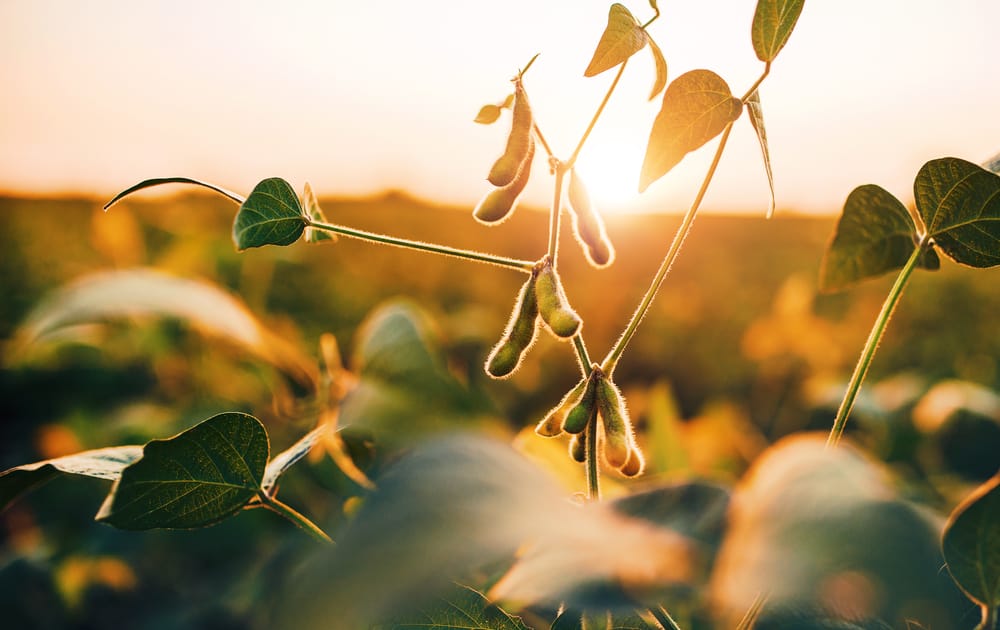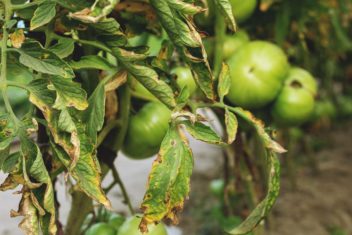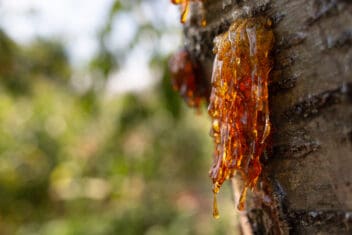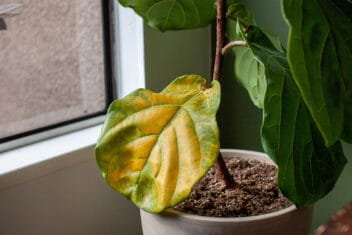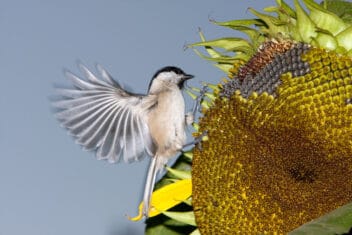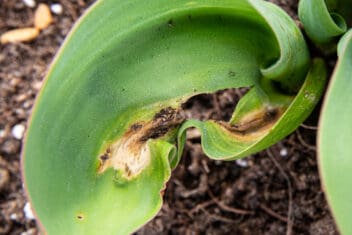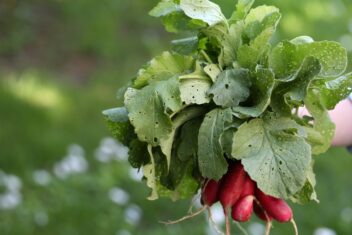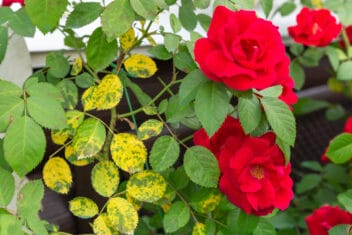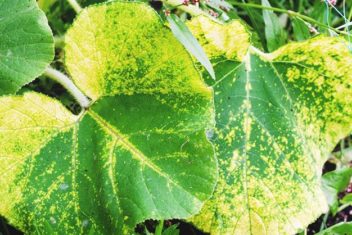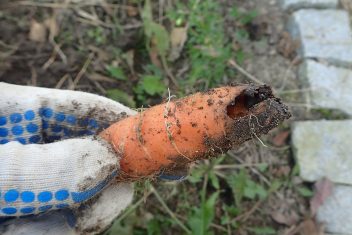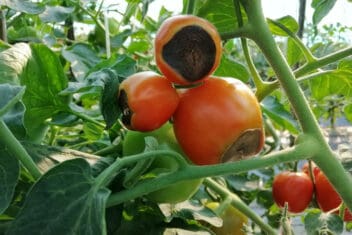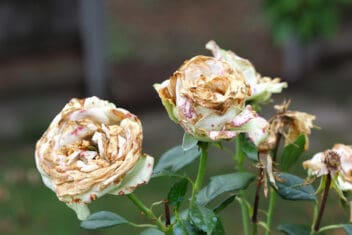Soybeans are famously easy to grow and provide easy fodder or homemade edamame without much effort. But, like all crops that have been cultivated for centuries, soy has a handful of species-specific growing problems.
Fungal infections are fairly common, as are environmental issues that cause pod dropping or a lack of pods to form.
Keep an eye out for these soy-growing problems and keep your crop growing strong.
How Hard Is It to Grow Soy?
Soybeans can be contentious. Soy acts as a high-protein base for animal feed and processed vegetarian food. Soy oil is present in so many grocery-store staples and nutritionists are still discussing its impact on our health. But despite the over-use and uncertainty about the sustainability of excessive, processed soy, soybeans themselves can be a fantastic crop for small-scale farmers and homesteaders.
Soybeans have a long tradition of healthy, sustainable use. Fermented soy is a staple in Asian cuisine and has shown no ill effects when used sustainably. Moderate amounts of homegrown soy also provide a fantastic base in home-mixed feed blends for chickens, pigs, and other livestock.
If you can grow bush beans, you can almost certainly grow soybeans. Soy (Glycine max) grows very much like bush beans (Phaseolus vulgaris).
That said, soybeans do have a few requirements that regular bush beans don’t. Beans and peas are some of the first seeds to go into the ground in the spring. We plant our bush beans, climbing beans, and peas as soon as the soil can be worked in the spring.
But soybeans aren’t as cold-hardy. You can plant soybeans when the soil is about 50°F, but you’ll often be disappointed. Ideally, wait until soil temperatures are closer to 70°F before planting. Cold soil can keep soybeans from germinating.
Soy plants need about 45-65 warm days before the beans are ready to pick. If you planted in cooler weather, the plants may need more time.
Most soybean growing problems show up in second or third-year crops. When you grow soybeans without crop rotation, soy-specific pests and diseases have the opportunity to take over. If you’re growing soybeans for the first time, start looking ahead to where next year’s crop can grow. Make sure it’s far enough from this year’s patch of soy to feel fresh and new to your plants.
On to the soybean growing problems to watch for!
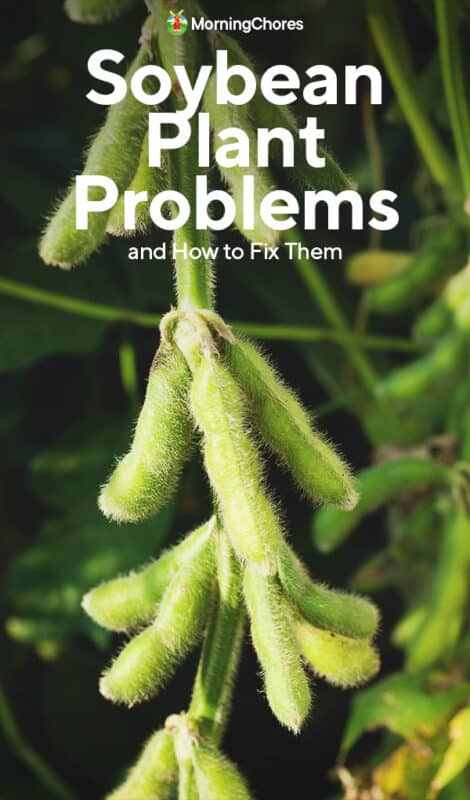
1. Yellowing, Wilting Plants and Stunted Growth
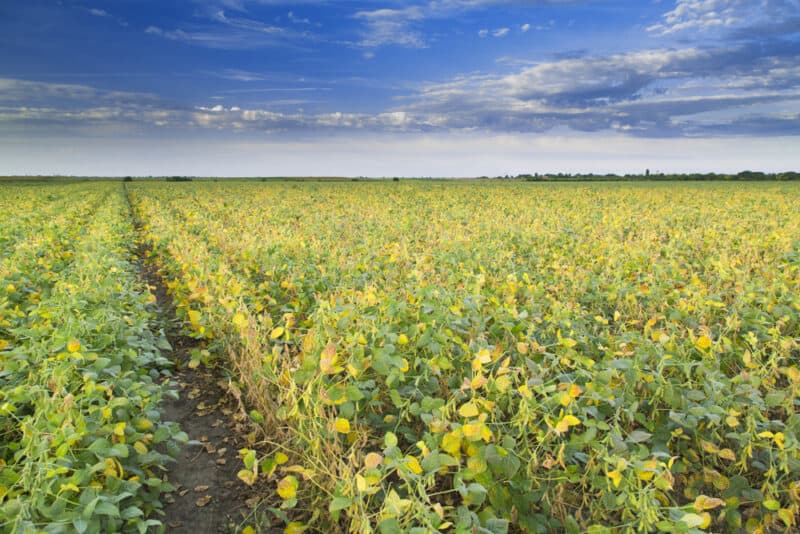
One of the most devastating and consistent soybean problems comes from nematodes. Nematodes are smooth, unsegmented worms. They’re tiny and they can be parasitic. Soybean cyst nematodes (Heterodera glycines) are parasites that specifically attack soybean plants.
Soybean nematodes have short, prolific lifecycles. They can easily overwhelm a bed of soy. Since the nematodes burrow into the root of the soy plant, devouring as they go, the damage they do is hard to mitigate.
Symptoms of soybean nematodes are hard to spot early on. These include wilting, yellowing, and stunted growth. By the time you spot these signs, the infestation is often too far along for the plants to recover. Once soybean cyst nematodes are in the soil, they can live for years in harsh conditions. So, it’s almost impossible to completely eradicate them – all you can do is keep them at bay.
Crop rotation, soil solarization, and planting nematode-resistant varieties of soy are the best ways to reduce the impact of nematodes already in the soil. But, of course, a good offense is the best defense. Try to avoid getting soybean cyst nematodes in the first place.
Avoiding Infestation
The best way to keep nematodes from infesting your soybeans is by maintaining a healthy moisture level. Plant your soybeans in well-drained soil and don’t overwater. Avoid planting in soaked soil or right before a rainy season.
Always rotate your crops after planting soybeans. Don’t plant any other legumes in your soybean bed for at least a year after growing soy. It’s also a great idea to solarize the soil for about 2-4 weeks after growing soy. Solarization will help reduce the number of soy pests that remain in the soil.
2. Yellowing Between Leaf Veins
Soybeans are sensitive to many different fungi, but the devastating Sudden Death Syndrome (SDS) is perhaps the worst of all the soybean growing problems. SDS has become a huge issue for both small- and large-scale soybean growers.
Caused by the fungi Fusarium virguliforme, it causes yellowing between the leaf veins, and curled or cupped leaves. It can also cause tan discoloration inside the lower part of the stem and the main taproot. It’s a tough, winter-hardy fungus that can devastate your soybean crop incredibly quickly.
Prevention is the best strategy when it comes to most soybean growing problems, but especially in the case of SDS. The only way to be certain that this disease is causing your issues is to send in a sample to your local extension office.
Avoiding SDS
Keep your plants well-spaced. Remember that soybeans grow into large bush-bean plants. They can reach up to two feet in diameter, so give each plant plenty of room to grow. When your plants have room for air to flow between them, they’re much less likely to develop fungi.
Keep the garden well weeded too. Weeds crowd out your plants and provide a host for dangerous fungi. Don’t overwater your soybeans either. Give the soil a chance to dry out between waterings. It’s also a great idea to water your plants at the base of the plant instead of overhead watering.
Soil solarization between plantings is another way to keep soil-borne fungi at bay.
3. Gray or White Fuzzy Stems
Sclerotinia sclerotiorum is a fungus that lives on seeds and soil. It can be spread by tools, water, soil, or in seeds or seedlings that you purchase. Once you have it in your garden it’s extremely difficult to get rid of, so do your best to buy certified disease-free products.
If your plants are infected, they’ll have gray or white fuzzy stems. The fungus can eventually move up into the leaves and pods, as well.
The best way to control this disease is to till the soil thoroughly before planting and make sure to rotate your crops so that soybeans aren’t growing in that area more than once every seven years. Plant your soybeans further apart than normal to improve air circulation if you know that sclerotinia rot is present.
4. Brown Lesions on Roots and Stems
If you notice brown lesions forming on the stems of your soybeans, it’s possible that you have Phytophthora rot, also known as stem and root rot. If you dig down to check the roots and see brown lesions there, as well, you can be fairly certain it’s present.
The fungi that cause these problems (Phytophthora sojae) can also kill off your seedlings before they can even get a chance to start growing.
Good drainage and tillage, as well as regular crop rotation is key to both erradicating and preventing this soybean growing problem.
5. Wilted, Brown, Stunted Plants
Charcoal rot is a devastating disease that can cause significant crop loss. It’s caused by the fungus Macrophomina phaseolina, and it lives in the soil or on other host plants such as corn, sunflower, and many weeds.
Symptoms include brown, stunted plants that will appear wilted during the heat. The fungus usually waits to attack stressed plants, which is why it’s so important to keep your soybeans healthy during the growing season.
Prevention is the only control, so make sure your crops are never drought-stressed, rotate crops regularly, and practice good garden hygiene by removing weeds all year long and clean debris out of the garden in the fall.
6. Powdery White or Gray Patches on Leaves
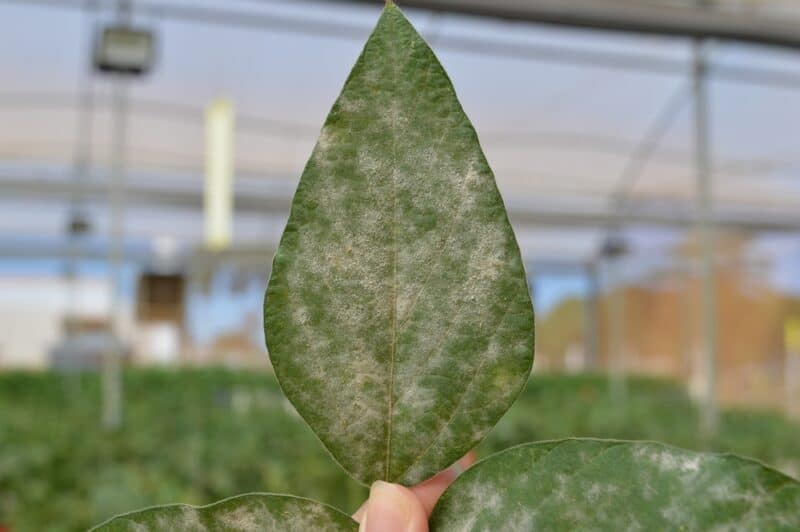
Powdery mildew on soybeans is caused by the fungus Microsphaera diffusa, and it’s extremely common. You can see it at any time of year, but later in the growing season is more common.
You’ll first see powdery white or grey patches on the leaves. Later, leaves may turn yellow or brown and fall from the plant. The good news is that it rarely causes any noticeable loss in yields, so there’s no need to break out the heavy chemicals.
Instead, try one of the natural control methods that we cover in our guide to powdery mildew.
7. No Bean Pods
Most of the time, if your plants look healthy but aren’t producing, there’s an imbalance somewhere in the environment. Healthy soy plants want to produce beans! Your soybeans just need a little help to overcome their growing problems.
If your plants look healthy and happy but are producing few, or no, bean-pods, look to the plant’s environment. Soybeans like heat and sunlight. Lots of heat and sunlight. They should grow in well-spaced rows with at least eight hours of sun a day. If they’re growing in the shade, or partial shade, they will produce fewer pods.
To keep your plants producing, you may have to thin out the rows or prune nearby plants.
If your plants are already in full sunlight, look to your soil. Failure to produce pods indicates that the soil isn’t right for your plants. It could be caused by a pH imbalance – both alkaline and acidic soil can stunt soybean production. Try to move the pH toward a healthy neutral.
An imbalance of nitrogen and phosphorus can cause your plant to focus on leaves instead of beans, too. Supplement with phosphorus and potassium to encourage bean production, and avoid adding any additional nitrogen.
Occasionally, over-crowding will cause soybean plants to produce few bean pods. When each plant isn’t getting the light, nutrients, and space it needs, a lower yield is a certainty.
8. Empty Pods
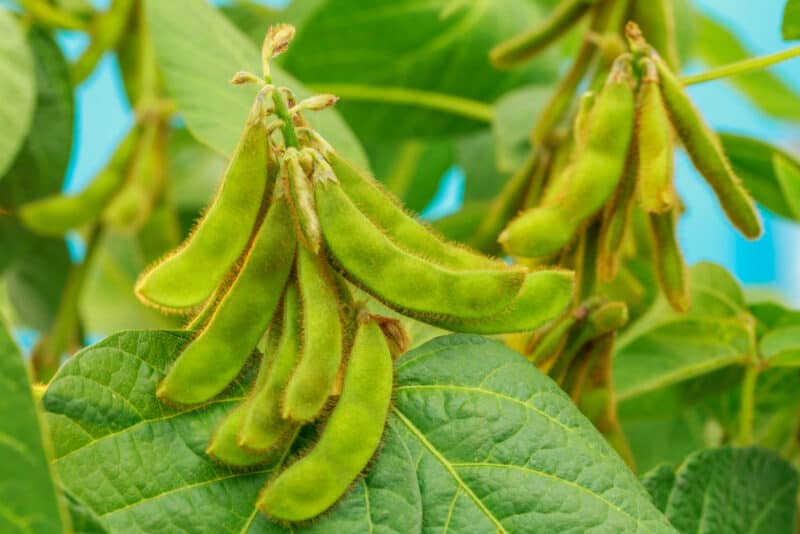
What if your soybeans have plenty of bean pods, but no beans? Fortunately, this is rarely one of the soybean growing problems you’ll encounter. Most of the time, if your bean pods are empty, it’s just too early to harvest. Soybeans need a long stretch of hot, sunny weather to produce beans. Be patient. If your pods are empty, wait a week and check again.
If the weather is unusually cool, it can take longer for soybean pods to fill. In cool temperatures, your plants may need an extra month to prepare for harvest.
Occasionally, there is trouble in the soy patch, however. If your beans are consistently failing to fill their pods, check your soil. The same soil imbalances that reduce the number of pods can cause empty pods as well. Balance your nitrogen and phosphorus as well as the soil pH as soon as possible.
9. Dropping Pods
Sometimes, your soybeans seem healthy but fail to produce harvestable beans. If your soybeans are dropping bean pods before they’re had a chance to ripen, there’s something wrong.
If the bean pods are dropping off your soy plants before they’re ready to harvest, it’s likely your plants are stressed. Of course, every bean plant will drop a few pods now and then, so don’t worry about falling pods unless they become excessive.
But if your soy plants are consistently dropping bean pods, your plant may be suffering from over- or under-watering. It may be over-heated, or chilled. While soybeans thrive in hot weather, extreme heatwaves or drought can stress them.
If weather extremes are stressing your soybeans, try to mitigate the damage. Give your plants some afternoon shade to keep them cool in the hottest hours of the day. If a rainy season is stressing them, try covering the rows during the heaviest rains to give the soil a chance to dry out.
